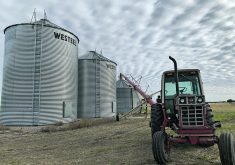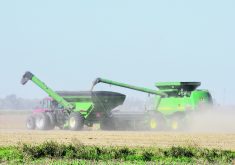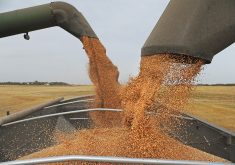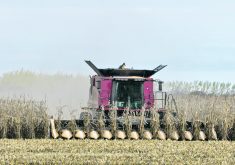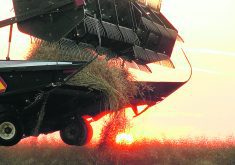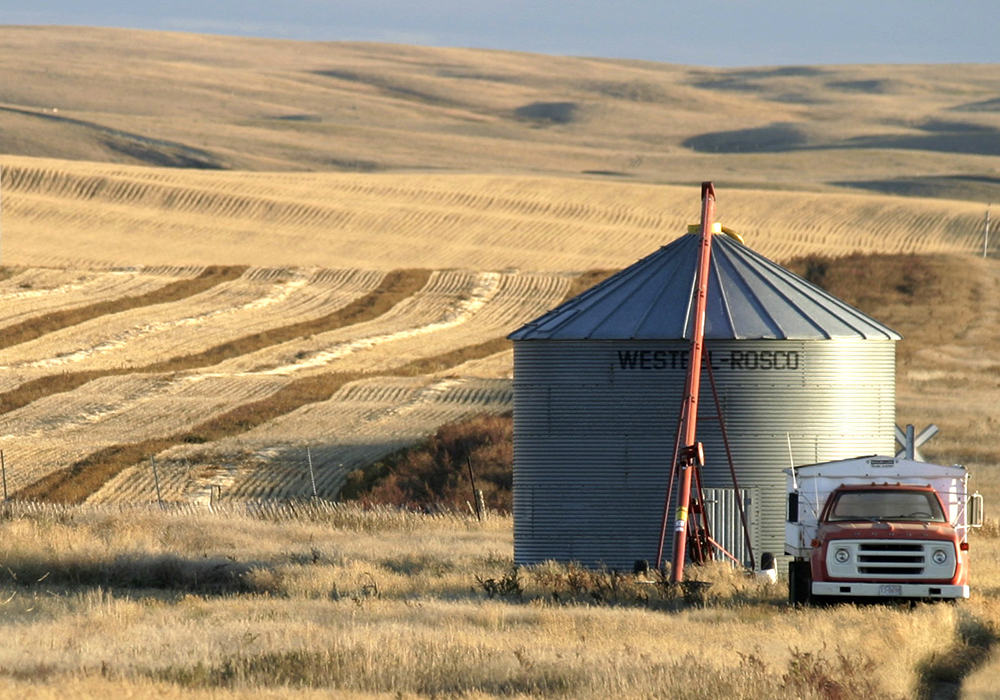Manitoba
SOUTHWEST
Rainfall ranged from about three to 20 millimetres with above normal temperatures.
Harvest is wrapping up for winter wheat and peas and just beginning for spring wheat and cereal silage, while canola is being swathed and prepared for straight cutting but is not quite ready for combining.
Pastures continue to rebound but fields that were overgrazed during dry periods are done for the year.
NORTHWEST
Precipitation was limited to trace amounts and isolated showers with high daytime temperatures.
Read Also
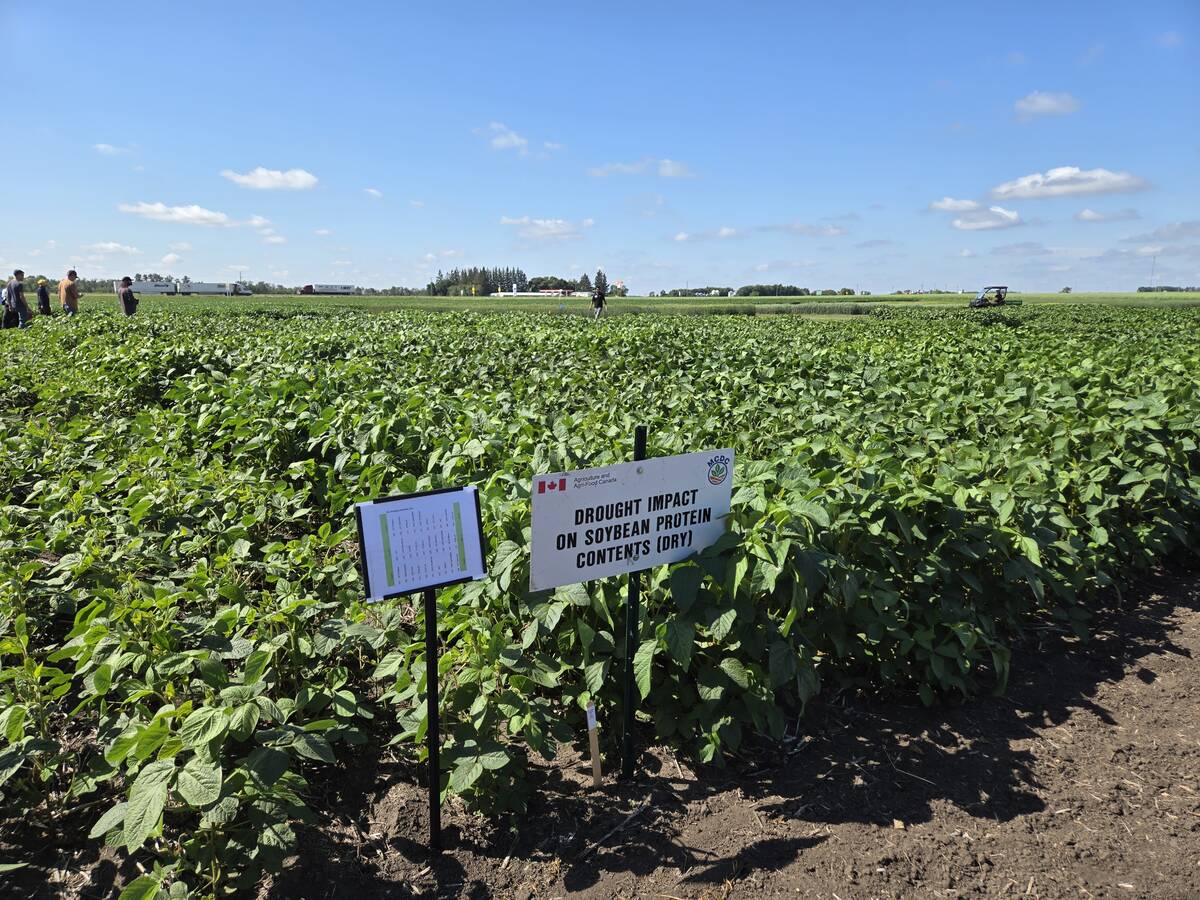
Carberry field day looks for agriculture solutions
Manitoba farmers explored research solutions for resilient crops, perpetual agronomic issues and new kinds of agricultural products at a field day at the Manitoba Crop Diversification Centre in Carberry on Aug. 6.
Harvest continues in winter wheat, early-seeded barley, peas, lentils, silage and green feed and second-cut alfalfa. Canola is also being swathed.
Soil moisture conditions are very dry to the 61 centimetre depth in the Roblin area.
CENTRAL
Scattered rain amounted to less than 10 mm in most areas as warm temperatures continued.
Harvest is complete for winter cereals and good progress was made in spring cereals as well as canola and peas.
Straw is being baled and most second-cut hay is complete but yields are down.
EASTERN
Precipitation varied from two to 10 mm with continued warm temperatures.
Soil moisture conditions on cropland are rated as 75 percent adequate and 25 percent short, while hay and pastures are 30 percent adequate, 40 percent short and 30 percent very short.
Livestock are grazing lower areas and some producers are starting to feed on pastures.
INTERLAKE
Rainfall ranged from two to 32 mm and high temperatures continue to quickly advance crops.
Pre-harvest applications and harvest of cereal crops continues, as well as swathing canola and second cut haying.
Soil moisture conditions on cropland are rated as 60 percent adequate and 40 percent short, while hay and pasture are 30 percent adequate and 70 percent short.
Saskatchewan
SOUTHEASTERN
Harvest is 23 percent complete with an additional 21 percent swathed or ready to straight-cut.
Precipitation varied from small amounts up to 18 millimetres along with hail and strong winds.
Topsoil moisture on cropland is rated 24 percent adequate, 47 percent short and 29 percent very short, while hay land and pasture are 10 percent adequate, 47 percent short and 43 percent very short.
SOUTHWEST
Thirty percent of the crop is in the bin and well ahead of the five-year average of 16 percent, with an additional 17 percent swathed or ready to straight-cut.
Some yields are much higher than expected, while other crops are yielding well-below average and many winter cereal crops have been taken for greenfeed.
Topsoil moisture on cropland is rated as five percent adequate, 33 percent short and 62 percent very short, while hay land and pasture are five percent adequate, 22 percent short and 73 percent very short.
EAST-CENTRAL
Four percent of crops are harvested and 15 percent swathed or ready to straight-cut.
Rainfall ranged from small amounts up to 18 mm.
Topsoil moisture on cropland is rated 35 percent adequate, 41 percent short and 24 percent very short, while hay land and pasture is 25 percent adequate, 48 percent short and 27 percent very short.
WEST-CENTRAL
Eleven percent of the crop is combined and 17 percent swathed or ready to straight-cut.
Precipitation varied from trace amounts up to 18 mm and crops are quickly drying down.
Topsoil moisture on cropland is rated 32 percent adequate, 55 percent short and 13 percent very short, while hay land and pasture is 31 percent adequate, 47 percent short and 22 percent very short.
NORTHEAST
Crops are quickly maturing and fields are being swathed and desiccated with one per cent of the crop in the bin and four percent swathed or ready to straight-cut.
Rainfall ranged from little to no rain up to 17 mm in some areas.
Topsoil moisture conditions on cropland are rated as 59 percent adequate and 41 percent short, while hay land and pasture is 45 percent adequate, 52 percent short and three percent very short.
NORTHWEST
One percent of the crop is combined and four percent swathed or ready to straight-cut.
Precipitation varied from very little up to 17 mm and crops are quickly drying down, but many areas are saturated and field access will be an issue.
Topsoil moisture conditions on cropland are rated as 59 percent adequate and 41 percent short, while hay land and pasture is 45 percent adequate and 52 percent short.
Alberta
SOUTH
Harvest progress is 36 percent combined and 14 percent swathed.
Two percent of early potatoes are dug and 45 percent of dry beans are undercut with average yields anticipated for both.
Pasture and hay field conditions have an average rating of 63 percent poor and 22 percent fair.
CENTRAL
Three percent of crops are combined and six percent swathed
Second cut dry land hay is 45 percent complete with 92 percent rated good or excellent for quality.
45 percent of pastures and 40 percent of hay land rated poor for growth
NORTHEAST
One percent of the crop is in the bin and one percent swathed with condition ratings at 79 percent good or excellent.
Dry land second cut hay is 18 percent completed with very good quality.
Excessive soil moisture continues to be an issue with a rating of 28 percent.
NORTHWEST
Many crops remain 10 to 21 days away from being ready to harvest compared to the five-year average of two percent combined and seven percent swathed.
Yields estimates are anticipated to be approximately 10 percent below last year.
Harvest of dry land second cut hay is 11 percent completed with over 90 percent rated good or excellent for quality.
PEACE
Two percent of crops are in the bin and six percent swathed.
Yield estimates have spring wheat and field peas slightly above average, canola 20 percent above average, while barley and oats are 10 percent below average.
Surface and sub soil moisture conditions are rated 75 percent good or excellent and only four percent excessive.


